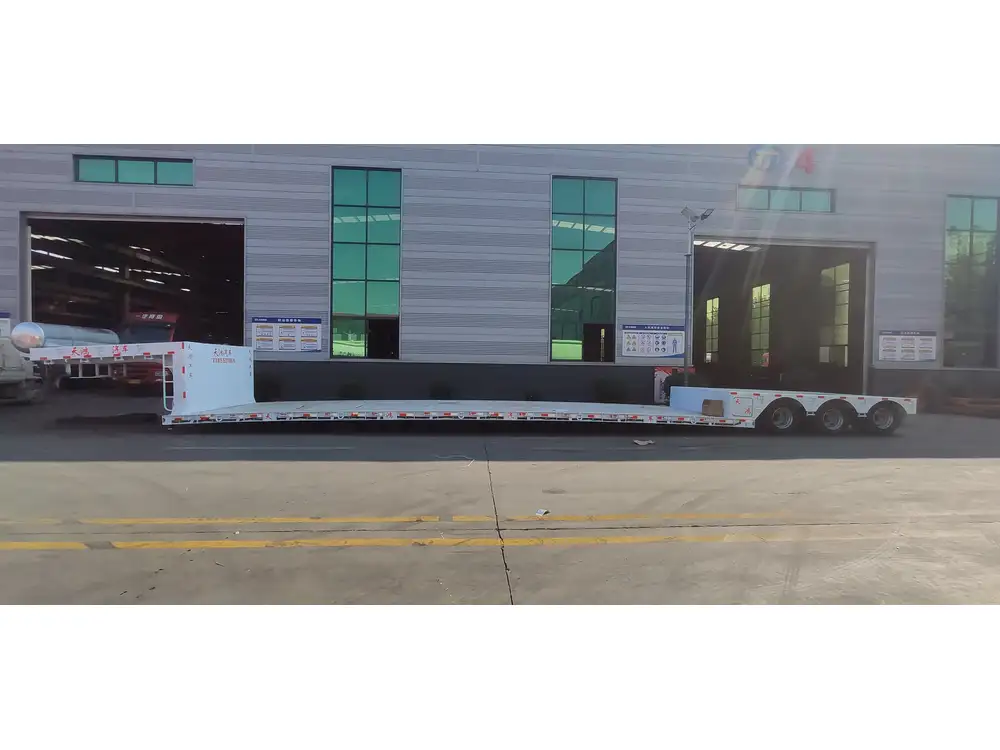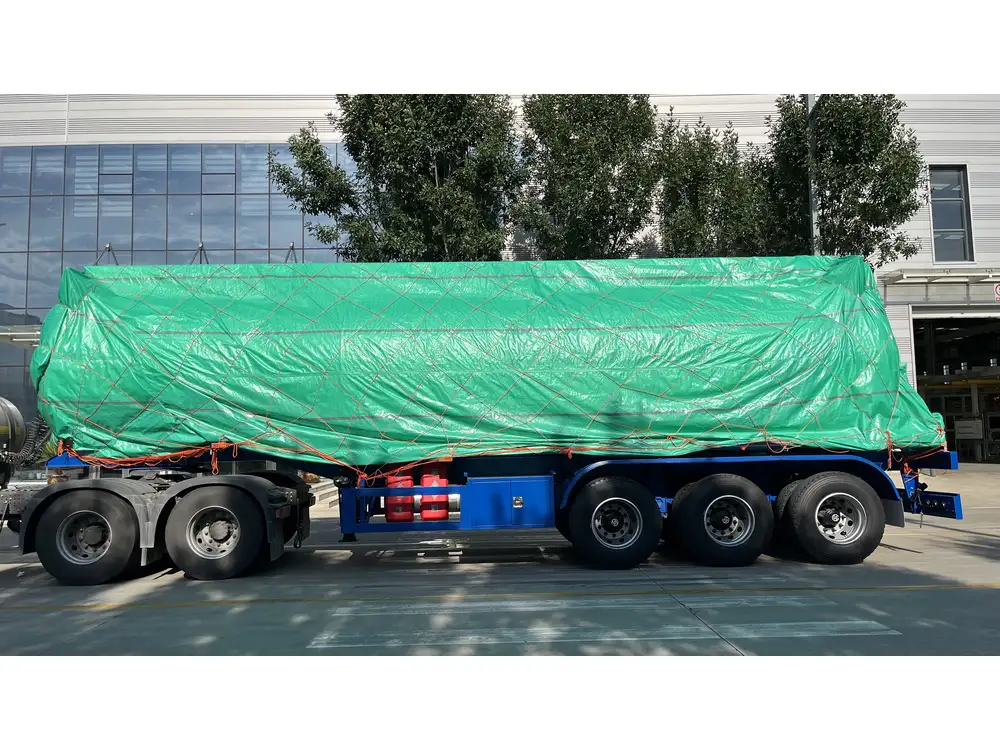When it comes to towing a 30-foot flatbed trailer, the choice of truck is vital for both safety and efficiency. In this comprehensive guide, we will delve into the various factors drivers must consider for optimal performance, including towing capacity, engine specifications, hitch types, and the potential challenges faced during transport. We will also provide a comparative analysis of different truck models to assist in determining the best option for your needs.
Understanding Towing Capacity
What is Towing Capacity?
Towing capacity is defined as the maximum weight a vehicle can safely tow. This figure is crucial when selecting a truck for a flatbed trailer, as exceeding this limit can lead to serious safety hazards and legal ramifications. For a 30-foot flatbed trailer, knowing its weight is imperative. Flatbed trailers can vary significantly in weight depending on their design, materials, and load.

Factors Influencing Towing Capacity
- Truck Design: The truck’s frame, suspension, and drive configuration (2WD vs. 4WD) all play pivotal roles in its overall towing capability.
- Engine Specifications: Engine size, horsepower, torque output, and fuel type (gasoline vs. diesel) significantly determine how much weight a truck can handle.
- Transmission: Automatic transmissions often perform better in towing situations due to their ability to manage shifts efficiently under load.
- Rear Axle Ratio: A lower axle ratio provides more torque to the wheels, making it more efficient for towing heavy loads.
Calculating Your Needs
Before diving into truck comparisons, it’s essential to recognize the typical weight range of a 30-foot flatbed trailer, which typically ranges from 3,500 to 10,000 pounds empty. When loaded, these trailers can weigh significantly more, sometimes exceeding 25,000 pounds depending on the nature of the cargo. Therefore, calculating the total weight of your load, including the trailer itself, will be the foundation for determining the ideal truck.
Hitch Types and Configuration

Understanding Hitch Classes
The connection between a truck and a trailer involves several types of hitches, categorized into classes based on the weight they can manage:
- Class I: Tows up to 2,000 lbs.
- Class II: Tows up to 3,500 lbs.
- Class III: Tows up to 8,000 lbs.
- Class IV: Tows up to 10,000 lbs.
- Class V: Tows over 10,000 lbs.
For a 30-foot flatbed trailer, you’ll generally need at least a Class III or Class IV hitch.
Choosing the Right Hitch
Choosing the right hitch is essential for the safety and stability of the towing operation. Here are some key considerations:
- Towing Capacity: Ensure that the hitch’s rating meets or exceeds the total weight of the trailer and its load.
- Trailer Compatibility: The hitch must be compatible with the trailer’s coupler type.
- Installations: Consider professional installation if unsure about the correct setup.
Top Truck Models for Towing a 30-Foot Flatbed Trailer
Now that we have assessed the crucial factors, let’s explore some top truck contenders. The following comparison of vehicles will provide insight into various models’ capabilities, all of which are robust enough for significant towing tasks.
| Truck Model | Engine Type | Towing Capacity | Payload Capacity | Comments |
|---|---|---|---|---|
| Ford F-250 | V8 Gas/Diesel | 12,000 – 20,000 lbs | 3,500 lbs | A formidable option with powerful engine configurations. |
| Chevrolet Silverado 2500 HD | V8 Gas/Diesel | 14,500 – 18,500 lbs | 3,600 lbs | Known for its strong tow rating and versatile bed options. |
| Ram 2500 | V8 Gas/Diesel | 13,000 – 19,780 lbs | 3,100 lbs | Excellent ride quality with robust towing features. |
| GMC Sierra 2500 HD | V8 Gas/Diesel | 14,500 – 18,500 lbs | 3,500 lbs | Equal to the Silverado but with slightly different options. |
| Nissan Titan XD | V8 Diesel | 12,000 – 16,000 lbs | 2,000 lbs | Unique design with moderate towing capacity, good for lighter loads. |

Detailed Model Insights
Ford F-250
- Strengths: The F-250’s heavy-duty nature allows it to handle formidable loads with ease. Its powerful engine options, coupled with advanced towing technology, ensure a smooth towing experience. The available turbo-diesel engine enhances torque, perfect for steep inclines and heavy payloads.
- Drawbacks: Fuel consumption can be higher than lighter models. Additionally, the larger frame may present challenges in tighter urban settings.
Chevrolet Silverado 2500 HD
- Strengths: With a towing capacity often exceeding the demands of a 30-foot trailer, the Silverado offers immense reliability, featuring a smooth transmission and enhanced braking systems that are vital during heavy towing. This truck is particularly well-regarded for its interior comfort, making lengthy trips more bearable.
- Drawbacks: It can be pricier than competitors in some trim levels, especially when fully equipped for heavy-duty towing.
Ram 2500
- Strengths: The Ram delivers exceptional torque with its diesel options, providing a capable towing experience complemented by advanced features such as a rear air suspension that increases stability while navigating difficult roads.
- Drawbacks: The overall size of the truck may limit accessibility in tighter spaces.
GMC Sierra 2500 HD
- Strengths: A sibling to the Silverado, the Sierra boasts a few different luxury features and design aspects. Its robust cargo capacities and imposing towing power make it an ideal choice. It also emphasizes driver assistance features that enhance safety during towing.
- Drawbacks: Similar pricing issues as the Silverado for higher-end trims.
Nissan Titan XD
- Strengths: This truck offers distinct styling and a robust V8 engine tailored for towing. Its design enhances ride quality while still ensuring durability.
- Drawbacks: The Titan’s fuel efficiency may occasionally lag behind its diesel competitors, limiting practicality for long hauls.
Safety and Maintenance Considerations
Prioritizing Safety While Towing
Towing a flatbed trailer demands strict adherence to safety protocols:
- Regular Inspections: Routine checks of your truck, hitch, brakes, tires, and trailer connections help prevent mishaps.
- Load Distribution: Properly distributing the load on your flatbed trailer enhances stability during transport, minimizing swaying and preventing potential accidents.
- Towing Equipment: Utilize equipment designed specifically for towing, such as load levelers and sway bars, to improve handling and safety.
- Speed and Following Distance: Maintaining slower speeds and greater distances from other vehicles prevents accidents and offers more reaction time when needed.

Essential Maintenance Practices
Proper maintenance will ensure longevity and reliability in your towing setup. Key practices include:
- Regular Oil Changes: Both engine and transmission fluids should be monitored and changed regularly, especially before and after long towing trips.
- Brake Maintenance: Debris and wear on the brake system can be exacerbated by towing loads. Regular assessments can prevent brake failure.
- Tire Checks: Tires should be inspected for wear, inflation levels, and proper alignment to ensure a safe towing experience.
Frequently Asked Questions
How Do I Know if My Truck Can Safely Tow a 30-Foot Flatbed Trailer?
Check the owner’s manual of your truck for its towing capacity. Compare that number with the total weight of the trailer and its cargo. If the weight exceeds the towing capacity, the truck is not suitable for towing that trailer.

What Type of Hitch Is Required for a 30-Foot Flatbed Trailer?
Typically, a Class III or Class IV hitch should suffice for towing a 30-foot flatbed trailer. Ensure that the hitch you choose has a higher capacity than the combined weight of the trailer and cargo.
Is a Diesel Engine Better for Towing Than a Gas Engine?
Diesel engines generally offer more torque and better fuel efficiency when towing heavy loads, making them ideal for demanding hauling. However, modern gasoline engines have become increasingly capable of handling heavier trailers, offering sufficient performance specifics.
Can I Tow a 30-Foot Flatbed with a Half-Ton Truck?
In some cases, a well-equipped half-ton truck can pull a 30-foot flatbed trailer, but only if the combined weight does not exceed the truck’s towing capacity, usually around 8,000 to 12,000 pounds depending on configuration.

Conclusion
Choosing the right truck for towing a 30-foot flatbed trailer involves a careful assessment of multiple factors, including towing capacity, engine type, hitch configuration, and overall vehicle performance. By evaluating your specific needs and considering the various truck models available, you can make an informed decision that prioritizes safety, efficiency, and reliability. Whether you opt for the brute strength of the Ford F-250, the finesse of the Chevrolet Silverado 2500 HD, or another capable vehicle, ensuring that you meet the right criteria will lead to successful and safe towing endeavors.



